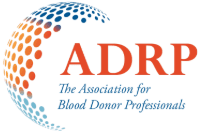The effectiveness of telephone surveys on the return of first-time donors: A randomized controlled trial
Authors
Vanessa C. Marsano, Dirk Hasenclever, Reinhard Henschler
Abstract
Background
The management of blood supply depends, among other factors, on the effective remobilization of first-time donors (FTDs). This study investigates the efficacy of telephone calls to increase second donation rates.
Study Design and Methods
A randomized controlled trial was conducted on 418 first-time blood donors. In the telephone group (TG, n = 206), men were contacted 9–10 and women 13–14 weeks after their first donation. They were asked about satisfaction and intention to return, and offered an appointment. The primary outcome was the return rate within 6 months after the first donation.
Results
The mean age was 28.8 ± 10.0 years and 59.9% of FTDs were female. In the TG, 89.3% were reached. Approximately 50% of each group had donated a second time by 24.2 weeks for the control group (CG) and 14.8 weeks for the TG. The six-month return rate was 65.0% in the TG and 54.3% in the CG (95%-CI [0.9%; 20.6%]; p = .033). The restricted mean time to return within 6 months was 19.4 weeks in the CG compared to 17.2 weeks in the TG (95%-CI [0.7; 3.7]; p = .004). The intervention effect tended to be larger in men than in women.
Discussion
Contacting FTDs by phone after their first donation increases the six-month return rate and reduces the interval to a second donation. Male donors appear to be more receptive to this intervention. Whether the effect of the intervention helps to establish a donor identity in the long term should be the subject of further studies.
July 16, 2024
Related Resources
Engaging blood donors as advocates Social media preferences and associations with marketing
Background: Various critical medical procedures would become impossible without blood donations—saving lives in emergencies, surgeries, and chronic conditions like thalassemia. Therefore, it seems crucial to enhance donor recruitment and ensure…
Rethinking the role of older donors in a sustainable blood supply
INTRODUCTION Many countries, particularly high human development index countries, are facing the challenge of an aging population.1 For Blood Collection Agencies (BCAs) in these countries, an aging population poses two…


